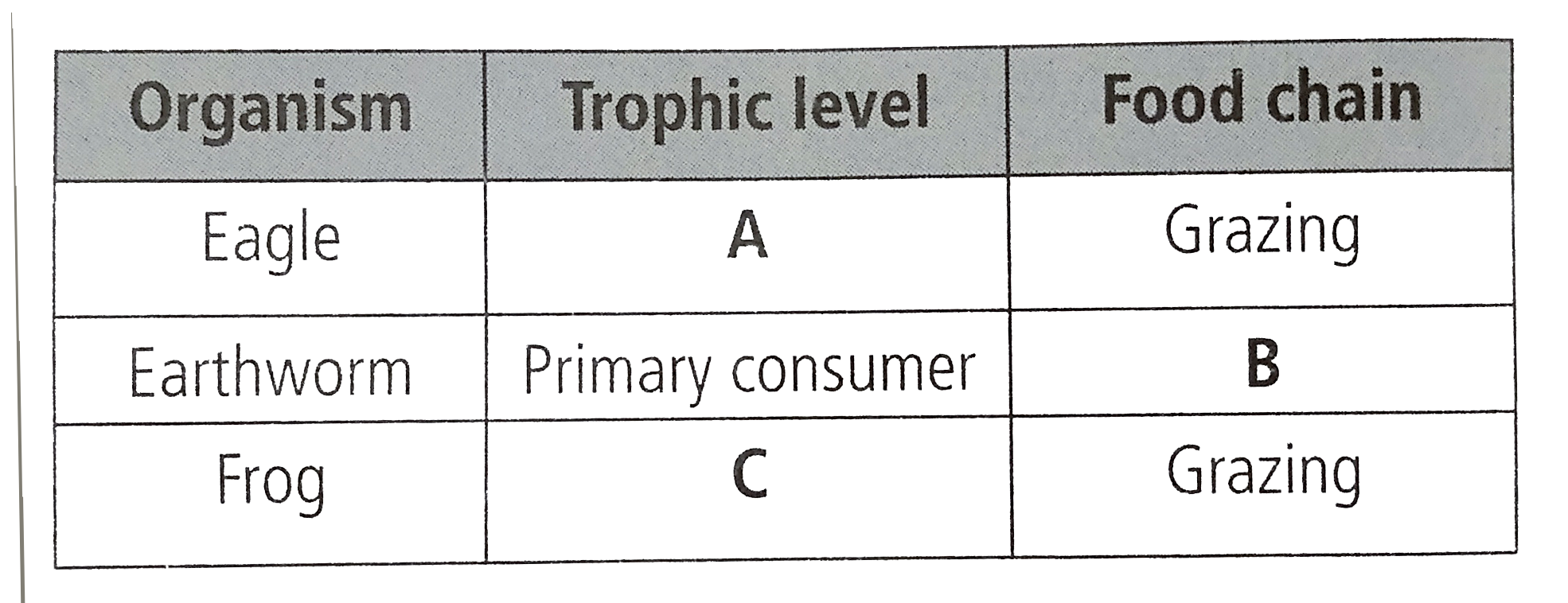Select the option that correctly identifies the chemical bonds present in the given biomolecules.
Polysaccharides-A, Proteins-B, Fats-C, Water -D
ABCDEsterPeptideGlycosidicHydrogen
ABCDGlycosidicPeptideEsterHydrogen
ABCDGlycosidicPeptideHydrogenEster
ABCDHydrogenEsterPeptideGlycosidic
The correct Answer is:B
To identify the chemical bonds present in the given biomolecules, we will analyze each biomolecule one by one:
Step 1: Identify the chemical bond in Polysaccharides (A)
- Polysaccharides are complex carbohydrates formed by the union of many monosaccharide units.
- The bond that connects these monosaccharides is called a glycosidic bond.
- This bond is formed through a dehydration reaction, where a water molecule is removed during the joining of two monosaccharides.
Step 2: Identify the chemical bond in Proteins (B)
- Proteins are made up of long chains of amino acids.
- The bond that links adjacent amino acids is known as a peptide bond.
- This bond forms between the amino group (NH2) of one amino acid and the carboxyl group (COOH) of another, also involving the removal of a water molecule.
Step 3: Identify the chemical bond in Fats (C)
- Fats, or lipids, are formed from glycerol and fatty acids.
- The bond that connects these components is called an ester bond.
- This bond is formed through a dehydration reaction between the hydroxyl group of glycerol and the carboxyl group of fatty acids.
Step 4: Identify the chemical bond in Water (D)
- Water consists of two hydrogen atoms and one oxygen atom.
- The bond that holds the hydrogen and oxygen atoms together is a covalent bond.
- Additionally, water molecules can form hydrogen bonds with each other due to the polarity of the water molecule, but the primary bond within a water molecule is covalent.
Summary of Bonds:
- Polysaccharides (A): Glycosidic bond
- Proteins (B): Peptide bond
- Fats (C): Ester bond
- Water (D): Hydrogen bond (and covalent bonds within the molecule)
Final Answer:
The correct identification of the chemical bonds present in the biomolecules is:
- Polysaccharides - Glycosidic bond
- Proteins - Peptide bond
- Fats - Ester bond
- Water - Hydrogen bond
- Polysaccharides are complex carbohydrates formed by the union of many monosaccharide units.
- The bond that connects these monosaccharides is called a glycosidic bond.
- This bond is formed through a dehydration reaction, where a water molecule is removed during the joining of two monosaccharides.
- Proteins are made up of long chains of amino acids.
- The bond that links adjacent amino acids is known as a peptide bond.
- This bond forms between the amino group (NH2) of one amino acid and the carboxyl group (COOH) of another, also involving the removal of a water molecule.
- Fats, or lipids, are formed from glycerol and fatty acids.
- The bond that connects these components is called an ester bond.
- This bond is formed through a dehydration reaction between the hydroxyl group of glycerol and the carboxyl group of fatty acids.
- Water consists of two hydrogen atoms and one oxygen atom.
- The bond that holds the hydrogen and oxygen atoms together is a covalent bond.
- Additionally, water molecules can form hydrogen bonds with each other due to the polarity of the water molecule, but the primary bond within a water molecule is covalent.
- Polysaccharides (A): Glycosidic bond
- Proteins (B): Peptide bond
- Fats (C): Ester bond
- Water (D): Hydrogen bond (and covalent bonds within the molecule)
The correct identification of the chemical bonds present in the biomolecules is:
- Polysaccharides - Glycosidic bond
- Proteins - Peptide bond
- Fats - Ester bond
- Water - Hydrogen bond
Topper's Solved these Questions
- BIOMOLECULESBook:NCERT FINGERTPS ENGLISHChapter:BIOMOLECULESExercise:Biomolecules
Explore 137 Videos
- BIOLOGICAL CLASSIFICATIONBook:NCERT FINGERTPS ENGLISHChapter:BIOLOGICAL CLASSIFICATIONExercise:Biological Classification
Explore 132 Videos
- BODY FLUIDS AND CIRCULATIONBook:NCERT FINGERTPS ENGLISHChapter:BODY FLUIDS AND CIRCULATIONExercise:Body Fluids And Circulation
Explore 151 Videos
Similar Questions
Knowledge Check
Select the option that correctly identifies A,B and C in the table.
 AABCTop carnivoreDetritusSecondary consumerBABCTop carnivoreDetritusPrimary consumerCABCSecondary consumerGrazingSecondary consumerDABCScavangerGrazingProducer
AABCTop carnivoreDetritusSecondary consumerBABCTop carnivoreDetritusPrimary consumerCABCSecondary consumerGrazingSecondary consumerDABCScavangerGrazingProducerSelect the option which correctly identify the given plant.
 AHelianthusBCommelinaCRosaDGossypium
AHelianthusBCommelinaCRosaDGossypium
Select the option that correctly identifies A,B and C in the given figure of female thallus of Marchantia.AA-Antheridiophore, B-Gemma cup, C-RhizoidsBA-Antheridiophore, B-Rhozoids, C-Gemma cupCA-Archegoniophore,B-Gemma cup, C-RhizoidsDA-Archegoniophore, B-Rhizoids,C-Gemma cup
Select the option that correctly identifies A, B and C in the given table.

View SolutionSelect the option that correctly identifies A to E in the given flow char.

View SolutionSelect the option correctly identifies I, II,III and IV.

View SolutionSelect the option where alphabets are correctly identified

View Solution
Select the options that correctly identifies the parts labelled from A to F in the given fiture of nephron.
View Solution



